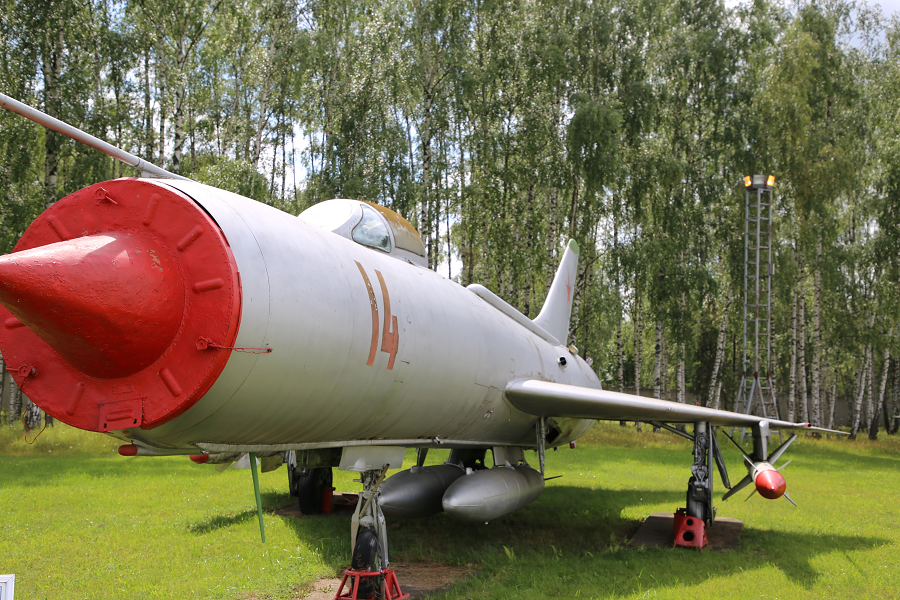Su-11. A Soviet supersonic interceptor from 1958. Flight range – 1700 km, max. speed – 2340 km/h, ceiling – 18000 m
The Sukhoi Su-11 (NATO reporting name: Fishpot-C) was an interceptor aircraft used by the Soviet Union during the Cold War.
The Su-11 was an upgraded version of the Sukhoi Su-9 (‘Fishpot’) interceptor, which had been developed in parallel with the OKB’s swept wing Su-7 fighter bomber. Recognizing the Su-9’s fundamental limitations, Sukhoi began work on the Su-11, which first flew in 1961 as the T-47 prototype.
The Su-11 shared the Su-9’s delta wing, swept tailplanes and cigar-shaped fuselage, as well as the circular nose intake, but had a longer nose to accommodate the more powerful ‘Oryol’ (Eagle; NATO reporting name ‘Skip Spin’) radar set. A more powerful Lyulka AL-7F-1 turbojet was installed, providing 9.8 kN (2,210 lbf) more afterburning thrust for improved climb rate and high-altitude performance (and to compensate for increased weight). The Su-11 can be distinguished from the Su-9 by the external fuel pipes atop the fuselage, aft of the cockpit.
The Su-9’s beam-riding K-5 missiles were replaced by a pair of R-98 (AA-3 ‘Anab’) weapons, usually one R-98MR semi-active radar homing and one R-98MT infrared guided. Like many interceptors of the period, it had no cannon.
Production of the definitive Su-11-8M began in 1962, ended in 1965, after about 108 aircraft had been delivered, although it is believed that at least some Su-9s were upgraded to Su-11 form.
A conversion trainer version, the Su-11U ‘Maiden,’ was also developed ; Similar to the Su-9U, it had full armament and radar systems for training purposes, but the second seat reduced its already marginal fuel capacity and was not intended for combat use.











